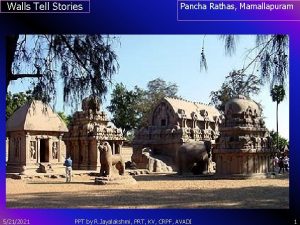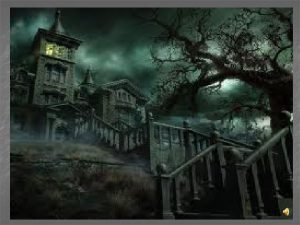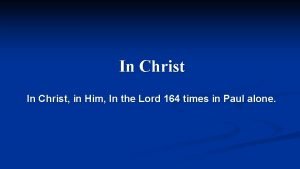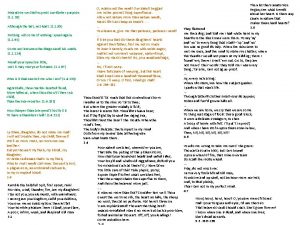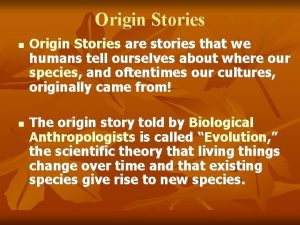Stories to Read Stories to Tell What shall








- Slides: 8

Stories to Read , Stories to Tell. What shall we do at the lesson? We’ll talk about stories , characters and writers, read and discuss a detective story listen to a biography use past simple, past continuous and past perfect.

Arthur Conan Doyle.

Main Facts about Arthur Conan Doyle. n n n A. Conan Doyle was born in 1859 in Edinburgh. His father, Charles E. Doyle, was an artist and an architect by profession but he worked as a clerk. The father died young and the Doyle family was very poor. Arthur got from his mother the talent of story-telling and it helped him when he became a writer. After finishing school Conan Doyle became a student of a medical faculty in the University of Edinburgh. He began his medical practice in a small town of Southsea , where he spent eight re he also began his writing career. He wrote detective stories about Sherlock Holmes and Doctor Watson. Besides detective stories, Arthur Conan Doyle also wrote historical novels war books , and two fantastic novels. Conan Doyle also traveled a lot. He visited Europe, the USA and Egypt. All his life Conan Doyle liked sports, his favourite sports were golf and boxing. He died in _1930 , but the famous detective Sherlock Holmes and his friend Dr. Watson, continued to be the favourite characters of British literature


Look the text through carefully. Are these sentences true (T) or false(F)? Make the false sentences true. n n n n n T-1. When on the second morning after Christmas Dr. Watson came to Sherlock Holmes, he at once noticed an old dirty hat lying on the chair. T-2. The hat was brought by Peterson, the door attendant. F-3. In the afternoon when Peterson was coming home he saw some thugs attacking a tall man with a goose. T-4. The door attendant wanted to help the man but he ran away. F-5. Running away the man dropped the goose and the wallet. T-6. Peterson brought the things to Sherlock Holmes and asked for help. F-7. It was easy for Peterson to return the goose and the hat to the man but he didn’t have time. T-8. When Sherlock Holmes examined the hat carefully he found a lot of clues, which could help then to find the man. F-9. The man had been poor but then he became rich. F-10. Dr. Watson believed Sherlock Holmes very quickly and the great detective didn’t explain him anything.

The End of the Story. n After that Holmes explained all the clues about the hat to Watson. Then Peterson came into the room. He brought a very large diamond which his wife had found inside the goose. Holmes realized that this was the famous diamond stolen from the countess when she was staying at a London hotel. Two hotel servants had been involved. One was the butler -James Ryder, and the other was John Horner-a plumber. . Horner had been working in the countess’s room, so he was arrested and put into prison. But he was not guilty. So Holmes advertised about the goose in the newspaper. That evening a man appeared. It was Baker, he didn’t know anything about the diamond. He told Holmes and Watson that he had bought the goose in the small shop. When they came there, they saw a man, who was asking about the goose. It was Ryder-the hotel butler. Holmes took him back to his house and Ryder confessed that he had stolen the diamond. After the crime he went to his sister and saw some geese in the garden, so he put the diamond into the mouth of one of them. Then he asked his sister for the goose as a Christmas present. Later he took the goose home, killed it, but there was no diamond there. He understood that he had chosen the wrong goose. So Holmes had enough proof to put Ryder into prison. But he let the man go. In the end Horner was released from the prison and the diamond was returned to the countess.

n n Covent Garden, theater in London, England, and the square in which it is located. The theater, officially called the Royal Opera House, is the principal London theater for opera and ballet. The first theater to occupy the site opened in 1732 and burned in 1808. The second theater opened in 1808 and also burned, in 1856. The present building dates from 1858. It closed in 1997 for extensive renovations and reopened in 1999. The Covent Garden square was originally part of a convent vegetable garden; it was laid out as a market in 1632 by English architect Inigo Jones, with neoclassical arcades enclosing stalls in which fruit, vegetables, and flowers were sold. In 1974 the stalls were moved to a site near Vauxhall Bridge.

. -Scotland Yard was the name of the first headquarters of London’s police force when the force was established in 1829. The building got its name because its rear entrance rested on the former site of a palace where visiting Scottish royalty stayed. The headquarters has since been moved.



